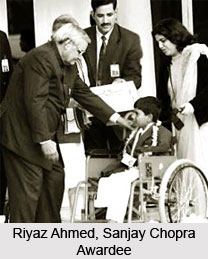The civilisation was rural and towns and cities did not form an important part of the state. Not much is known regarding the town life of the period of the Later Samhitas and Brahmanas. However in the later period we find that Punjab was studded with a large number of towns and cities. Most of them were autonomous as they were being governed by their own councils. It is considered that these councils consisted of elders who were appointed by a general consensus of the public.
Ordinary towns were presided over by an officer of the central government who was known as purapala. In case the town was the headquarters of a district, the district officer discharged this duty also. In case the town was a fort it used to have another imperial officer called kottapala. In the Rashtrakuta Empire Rudrapayya was the executive of the town of Saravtura in Karnataka. He was also the bodyguard of the Rashtrakuta emperor Krishna III. Mahadeva and Patala-deva who were the joint prefects of Badami ruler Jagadekamalla were both military captains.
The purapalas were selected from the group of scholars. Thus some of them were interested in promoting the study of the six systems of philosophy. It is quite possible that they might have combined the literary qualifications along military ability as well. The purapala or the governor was assisted by a non-official committee who was known as goshthi, panchakula or chaukadika in different parts of the state. All classes are represented in the committee.
At times towns were divided into wards and each ward sent its own members to the committee. The process of election of the representative is not known. Panchakula consisted of not five but often a larger number of representatives who were sent by different wards. For convenient execution of functions an executive was appointed. He was called vara in Rajputana and Central India during the rule of Pratiharas. Some evidences suggest that the executive committee changed annually in the town.
The number of members of the executive committee varied according to the needs of each case. Their duty was to look after the executive work, collection of taxes, the investment and recovery of public funds, the administration of trust funds and so on.
The executives were assisted in their work by permanent staff. A permanent secretary or karnaika was appointed to look after the records and correspondence of the committee. Major documents were drafted by him under the instructions of the committee. He should have a sufficient clerical staff under him. In order to collect market dues an officer called kauptika was appointed which formed the main stay of the local finance. At times the dues of the central government in custom duties were collected by town committee.






